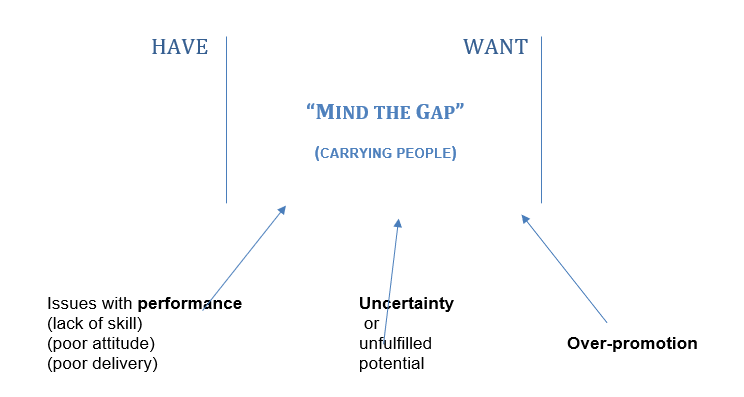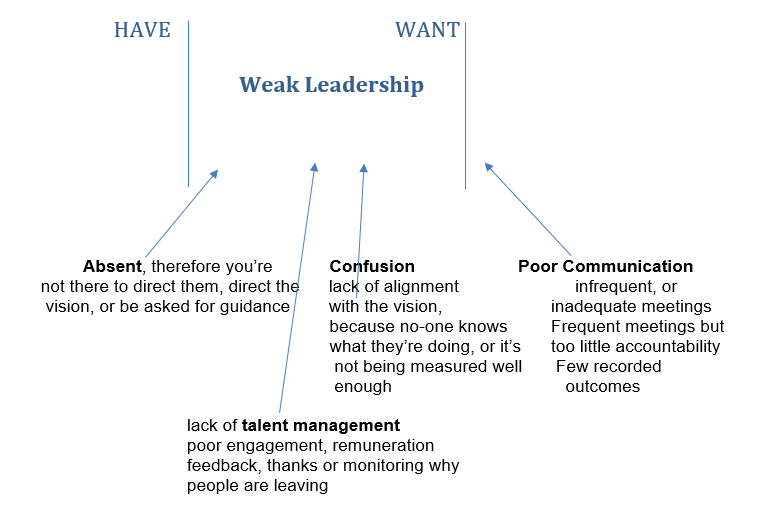Every business experiences problems. These include difficulties when they merge or buy another business. Also, issues with cash flow, and struggles with managing people. Whilst I’m not an expert in business strategy, I find I can help small to medium size enterprise. This is advising when they meet complicated or unforeseen issues within their teams.
One of the difficulties entrepreneurs experience, is that they are passionate and driven. They are very capable at what they do. But, as the business grows, their lack of skill and, or, experience with people, begins to show. This is not always the result of struggles with mental health as you might expect. This has been my traditional area of expertise. Instead, the root of it is often the gap between what they have, and what they want from their employees

When you become senior in business the focus is often to drive the strategy and look for results. So, in any situation, it’s frustrating if what you get is different from what you expect or want. In my experience, owner managers and entrepreneurs tend to emphasise this gap. They do so partly because they’re aware of it as they are busy tackling it all the time.
They drive their sales people to sell more. They encourage production teams to deliver faster or better. They want the top team to be present, on the ball, and perform. But people are people no matter what level of the business. They under-perform, fail to deliver or get sideswiped by life’s events. It is important to recognise this isn’t because ‘nobody’s perfect’, but it’s also because of three things: –
- Do they ‘get’ it?
- Do they ‘want’ it?
- Do they have the ‘capability’ to do it?
Those who do get it drive themselves hard and do well. When they don’t get it, they have a bad attitude and don’t take responsibility. They may chat a lot, waste time, are ineffective, inefficient, or even lazy. Those who don’t want it, often look the same. They don’t go above and beyond. They leave on time instead of staying late. They may even arrive late, and you notice a creeping lack of engagement or reliability. At top level, this can be damaging. An executive who isn’t visible is difficult to hold accountable.
Those who don’t have the capability, often feel the most shocking to you. This is because it suggests your recruitment process may be in question. Your interview technique, selection process and your judgement may be an issue. Especially, if you had the final say.
The issues are always going to be a question of perspective. What you might want to see change as an executive, has to be through the filter of how your direct reports feel. Through their eyes, the problems can seem different, so let’s examine their typical feedback: –

The difference between the view an executive has, and their direct report can be huge! If you think you know what your people want but any of these issues exist, then it’s important to know. The problem may not be them, but it can also lie with you. If your key people leave, they take their IP with them. This isn’t good for you, the team, or the business. Correcting this may not be quick. If you spot the need for it, then not tackling it can carry a higher price for you than investment needed to correct it.
Sending an individual you have concerns about, for coaching, can be the preferred step. But it can be more valuable to examine your role too. That’s in case there is more than one issue, but you hadn’t realised. Bringing someone in-house tackles every symptom you are seeing. The symptoms show up when the right questions, and the right diagnosis takes place. So instead of seeing issues as the problem, see them as a symptom. It is possible with perspective and helicopter vision, you may be able to find the deeper, root cause.
If you get to the bottom of what needs to change, there is often better value in the long run. This can be better than sending one person for coaching. So, when someone senior comes in the practice, I often ask bigger questions. This is so that I can determine what the real issue is. As that unfolds, it can be better to come in and work with the team so that bigger problems resolve. That way, you achieve more than one solution to more than one problem. Sometimes you never even realise what was going on underneath.
If this resonates with you, do get in touch. It would be good to hear from you,


